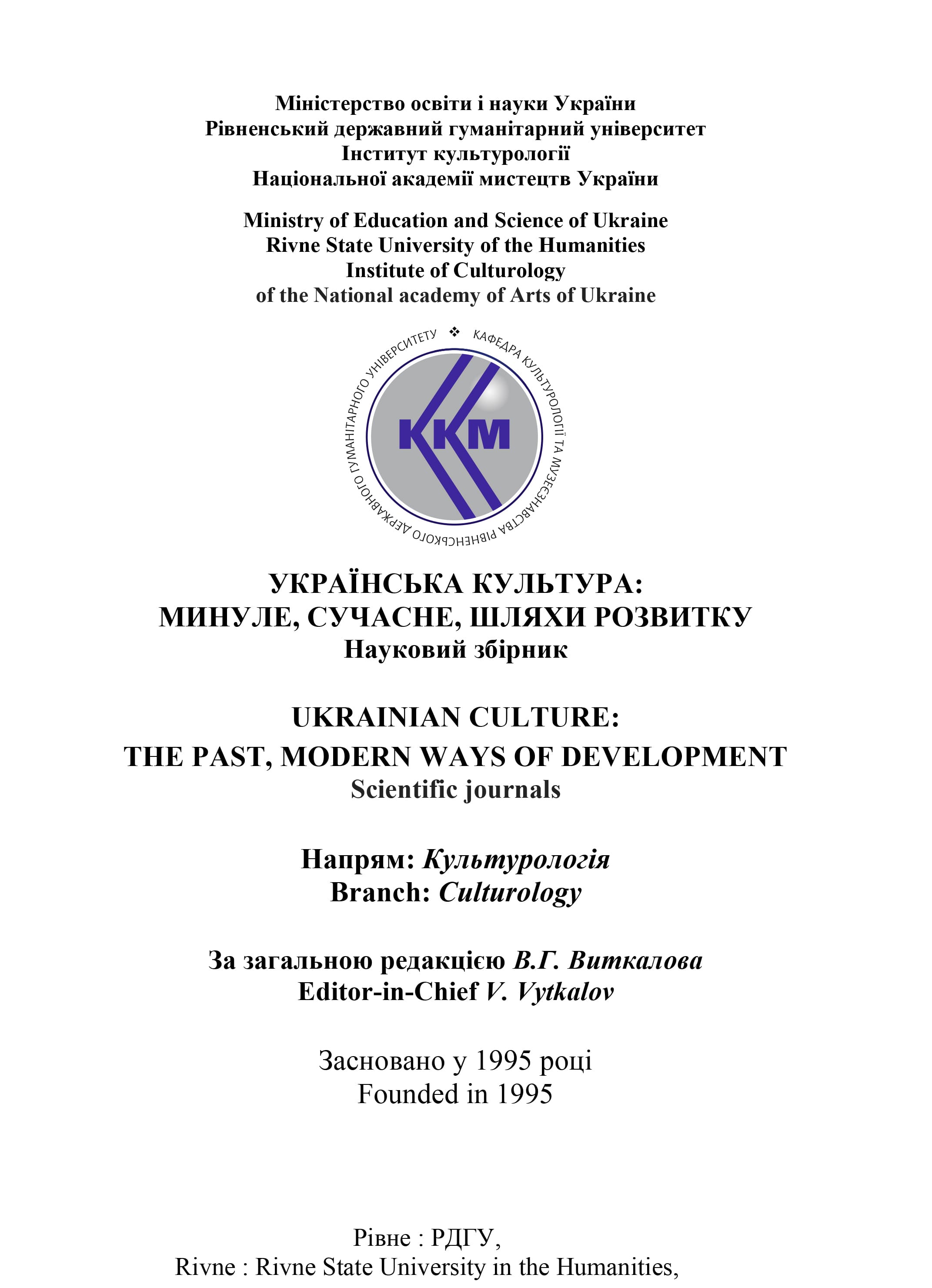THE BABYNYAR MEMORIAL AS THE CULTURAL SPACE IN STRATEGIES OF CULTURAL MEMORY KEEPING
DOI:
https://doi.org/10.35619/ucpmk.vi43.574Keywords:
places of memory, cultural heritage, present pasts, present futures, Holocaust, cultural space.Abstract
The article is focused on the forms of the cultural space arranging according todominant strategies for preserving cultural memory in the context of cultural heritage studiesat the example of the Babyn Yar Memorial Complex. Babyn Yar is the place of memory which allows to represent the special in which the universal of the new regime of temporality is reflected.
The methodological grounds for the article became the history of memory studies, which cover the issues of cultural heritage and, and in particular, places of memory. The works of Aleida Assmann, Pierre Nora, Andreas Huyssen, and Hermann Lübbeprovided the general framework for research on these issues, and it was conceptually reflected in the text. The academic novelty of the research is in the fact that it defines, in what way modes of temporality (present futures and present pasts) determine the forms of organizing the cultural space. Places of memory are a spatial artifact of a change in the regime of temporality. The first temporal regime of the present futures conditioned the conceptual arrangement of the cultural space by the Soviet monument, monumental one in size and length. The present pasts actualizes the genetic connection with the past, grasping which is possible to understand the present self. In the new mode of temporality, the emphasis is shifted from the history of great achievements to the history of everyday life, and attention is emphasized to individual human traumas and emotional wounds. Therefore, the history of memory with an appeal to personal, psychological aspects comes to the forefront in historical studies. The conceptual transition to the present past took place through monuments, which differentiated the
dead people by national, professional, religious, and mental differences. The current state of the cultural space of BabynYar is defined by the use of the landscape of the Memorial Complex for the creation of immersive art objects, such as the Road of Sorrow, the audiovisual installation «The Mirror Field», «The Crystal Wall of Tears», the project «The Path», «nteractive Diary» and so on. Art deals with immersing the viewer in the object of contemplation in such a way that he becomes an active participant in it. All kinds of technological devices that make it possible to model consciousness through visualization.




